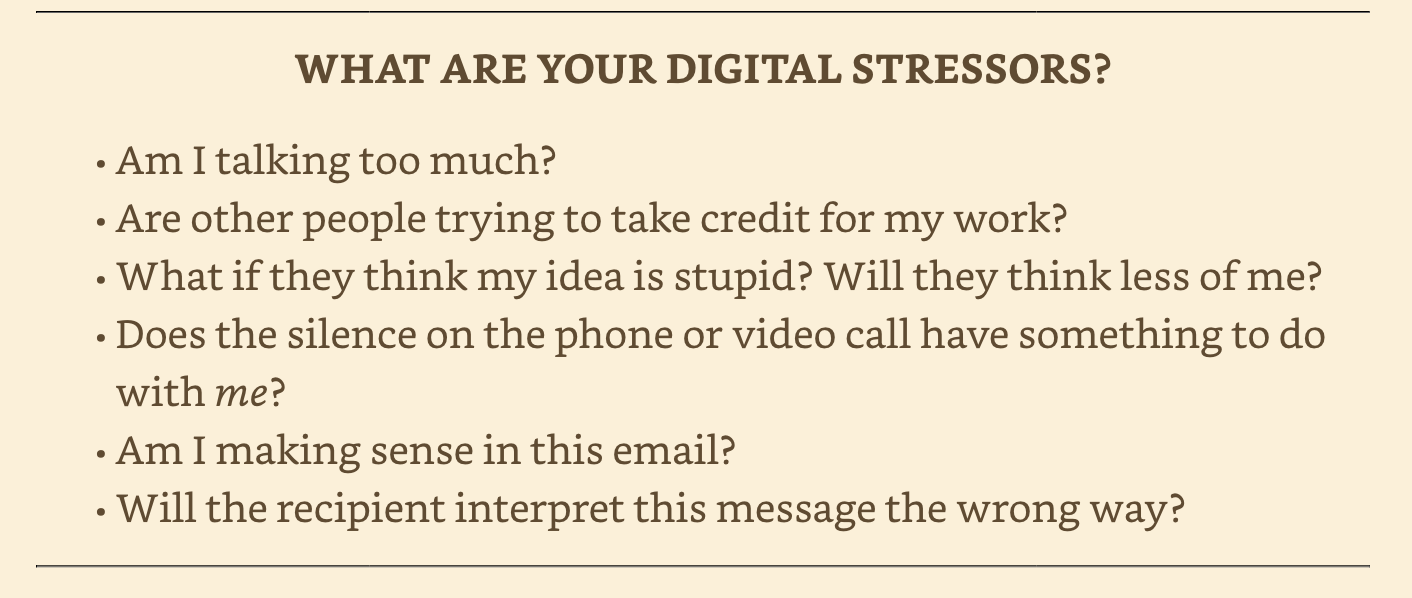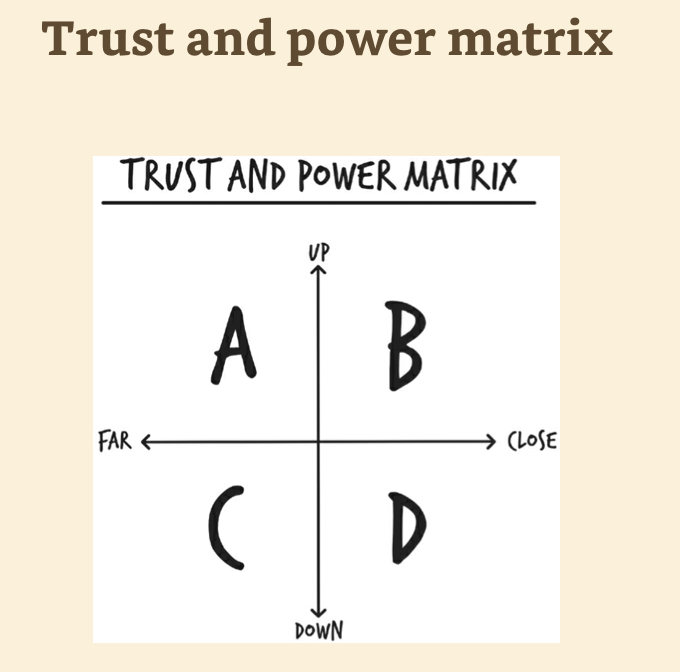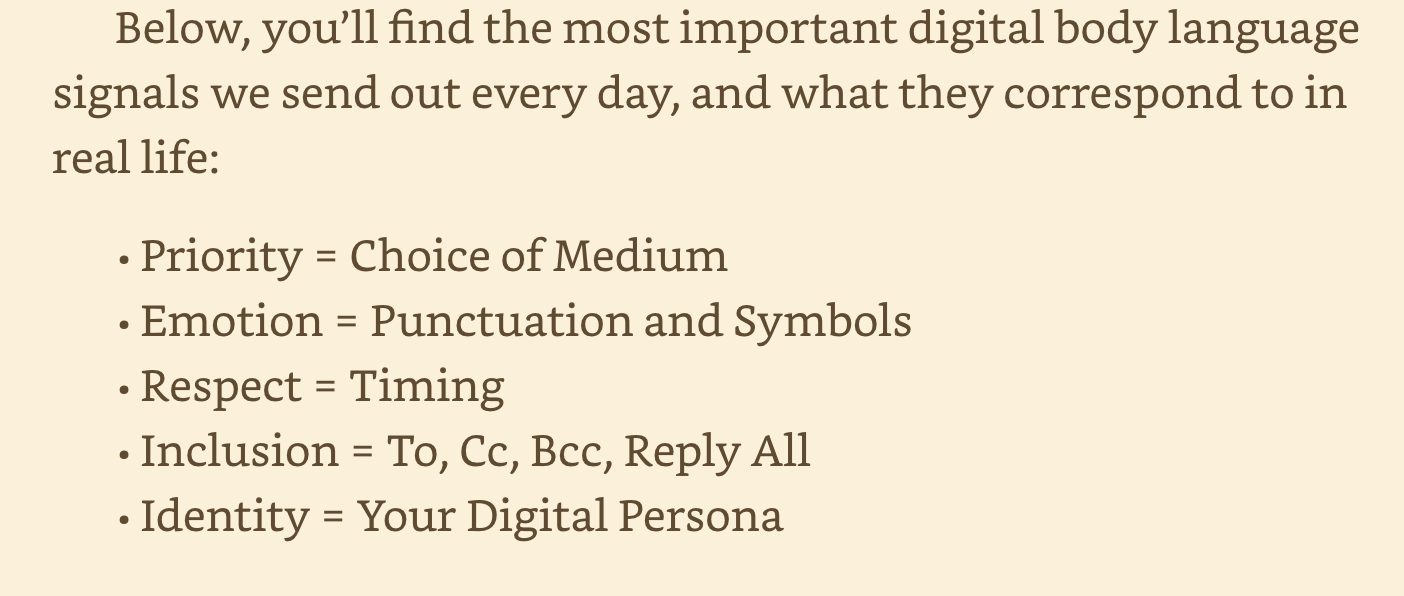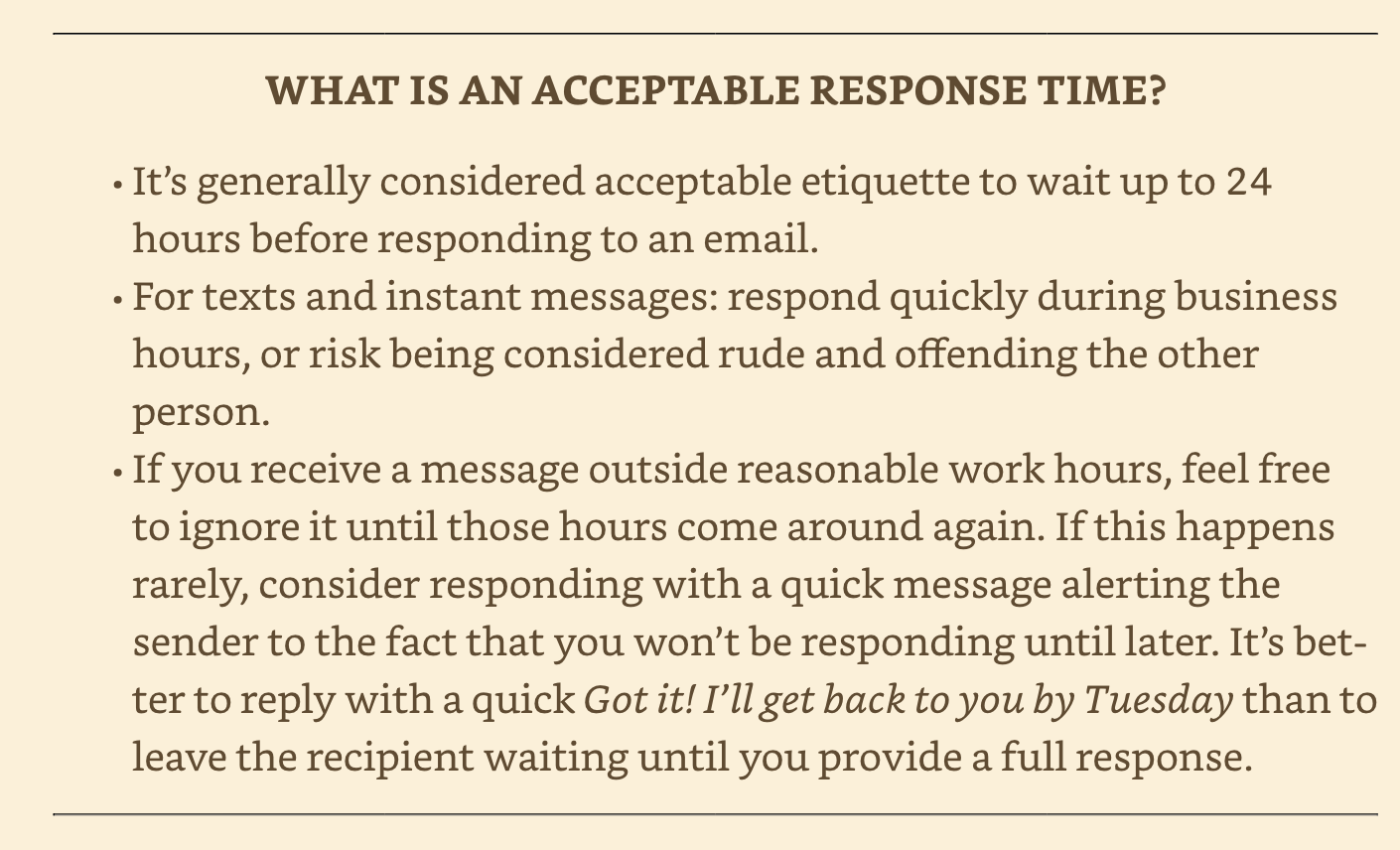My review of Digital Body Language - build trust and connection no matter the distance
When I went home on March 11 of last year, I could not have imagined that this would be my last day in the office for the rest of the year. We knew a virus was turning the world upside down, but little did we know what was coming.
We do not know when this virus will disappear or if it will disappear! I am writing this post in mid-December 2021, and there is still no sign that the pandemic has come to an end.
What is clear is that the way we work has changed forever. Many workers, especially knowledge workers, will never return to the office again. Or if they come back, it will be in a hybrid model, for brainstorming sessions or 1 or 2 days a week or a month ... In this environment we are moving in, I really wanted to read the book Digital Body Language by Erica Dhawan. It is a book that explores how to build trust and connection no matter the distance.
So taking advantage of my summer vacations and quietly on the beach, I read the book little by little, and I find it interesting. Here is a summary of the Kindle notes.
I hope you find it helpful and if you are looking for a new book to read, this is a good option!
Become a great digital communicator.
Late email replies, ambiguous texts, awkward video calls . . . In today’s world, where so many of our daily interactions happen from behind a screen, it sometimes seems like we’ve lost our ability to effectively communicate with each other.
And it’s true: without traditional body language to convey – or clue us in to – tone and meaning, what, when, and how to say things is often confusing. But, there are actually dozens of digital cues at our disposal. We just need to learn to tune in.
If you want to communicate effectively in the virtual age, you need to tune into your digital body language
We send each other an unbelievable amount of messages every day. And a lot of these messages are taken the wrong way. Take email. 306 billion emails are exchanged each day; the average person sends 30 and receives 96. According to the Journal of Personality and Social Psychology, the tone of our emails is misinterpreted 50 percent of the time!
Our bewilderment boils down to the fact that we’re cue-less – in the most literal sense. Anthropologist Edward T. Hall had a name for the nonverbal cues – things like eye contact, smiles, pauses, yawns, tone, volume, posture, and proximity – which make up nearly three-quarters of face-to-face communication. He called them “the silent language.”
Problem is, the silent language isn’t exactly visible from behind a screen
The four laws of digital body language: Value Visibly, Communicate Carefully, Collaborate Confidently, and Trust Totally.
Value Visibly is about being attentive and aware of others, while also communicating that “I understand you” and “I appreciate you.” The first law of digital body language acknowledges this disconnect. It focuses on the fact that unstated appreciation needs to become stated in today’s world. Valuing Visibly means honing new skills to proactively show you value others’ contributions and understand their needs.
The first principle of valuing visibly is to show you’re paying attention – “reading carefully is the new listening.” To do this, always reference details in your communications. It shows you put in the time to consider the topics and care about the work the other person did. It goes without saying, but make sure you spell her name right
Communicate Carefully The second law of digital body language, Communicate Carefully, involves making a continuous effort to minimize the risk of misunderstanding and misinterpretation by being as clear as possible in your words and digital body language.
Communicating Carefully involves choosing the right words, tone, and channel
To do this, you must become discerning with things like word choice, punctuation, nuance, and humor.
In addition to being impeccable with your own words, it’s essential to read the room – that is, tailor your tone to your audience. Think about how what you’re saying may come across, especially based on your rank. And always remember, when communicating with your boss or colleagues, err on the side of neutrality.
Greetings and signatures also indicate tone. If you want a swift, no-nonsense response, add a formal title in your email signature. Alternately, starting emails with Hey, or adding a smiley face to a one-liner, is a sign you’re fairly informal.
To stay in control of digital conversations, be conscious of the channel you’re using. Length, complexity, and familiarity
For longer emails, provide clarity with bold or underlined headings, and share context upfront.
Communicating carefully is about ensuring everyone’s on the same page. When misinterpretations do happen, it’s often because of a dropped word or out-of-place punctuation mark.
If you’re confused by a message, ask follow-up questions. If the medium’s not working, switch it up; sometimes, a phone call is worth a thousand emails. If tone’s the problem, assume the intentions were good, and respond with facts.
When interpreting digital body language, giving people the benefit of the doubt is key
The third law, Collaborate Confidently, is about the freedom to take conscious risks while trusting that others will support your decisions. Collaborating Confidently means prioritizing thoughtfulness while reducing groupthink behavior.
To Collaborate Confidently, be consistent, stay informed, and exercise patient responses
Consistency is a hallmark of Collaborating Confidently – the third law of digital body language. Missed or muddled messages can cause confusion, leading to canceled meetings, inaction, or even chaos.
To keep teams informed and up-to-date with what’s happening, check-in with them regularly. To stay on track, it’s important to set explicit goals from the get-go – ask yourself and each other What does success look like? – and remember to define thoughtful timeframes and expectations. You could, for example, end phone calls by asking, Who is doing what – and by when allowing yourself, and others, the time to craft careful, patient responses.
We all know that answering messages when you’re tired, frustrated, or angry will just lead to wasted time; so don’t do it! While asynchronous communication comes with its drawbacks, it also provides us a chance to consider our words instead of blurting out things we immediately regret.
So save your email as a draft, and wait up to 24 hours – a totally acceptable timeframe – to revise and send it.
Instead, we assume the best intent from others, knowing that no one will succeed at someone else’s cost, or by misdirection, or by forcing the upper hand.
Trust Totally The fourth and final law of digital body language, Trust Totally, happens only after the first three laws have been implemented, yielding 360-degree engagement. The “Totally” part of Trust Totally is key, since it implies the highest levels of organizational faith, where people tell the truth, keep their word, and deliver on their commitments. To foster an environment of Trusting Totally, be vulnerable and empower others to take ownership of their ideas
To create this dynamic, first and foremost emphasize vulnerability. Leading by example makes it easier for team members to embrace the uncertainty of discomfort. Statements like “Operations is not my strong suit, and I’m open to your suggestions” or “I may be missing something – Can you help?” can encourage colleagues to speak up. Admitting you need input also reminds them how much you appreciate their contributions.
Next, empower others. This involves entrusting them fully with their work, and providing them the means to complete it. Promote an environment of psychological safety in both good times and bad. This lets people know they can always introduce a controversial perspective or say, This isn’t working for me, without worrying about the consequences.
Inevitably, mistakes and bad ideas will crop up. Remember to criticize the action – not the person






Bridge divides by being aware of communication differences across cultures and generations.
Here’s a question for you: Is it Speak now, or forever hold your peace or The loudest duck gets shot? Here’s another: Say one person raised in the West and another raised in China are colleagues. Who’s more likely to brainstorm out loud? and who will think in silence?
We often don’t realize how childhood stories or cultural upbringing influence our communication styles. And so when someone else’s norms clash with our own, we judge them as too flashy or too formal without pausing to consider the circumstances. So what’s going on here?
Communication experts generally divide the world into two types of cultural expression. High-context cultures – countries in Africa, Asia, the Middle East, the Mediterranean, Central Europe, and Latin America – rely on implicit communication and nonverbal cues. But in low-context cultures – most English-speaking Western countries, including the US and the UK – explicit verbal communication is essential.
To thrive in high-context cultures, read between the lines, build long-term relationships, and employ face-to-face and phone interactions to foster trust. Begin emails with a polite greeting, followed by the question at hand, and then a personal note, like How was your holiday? Be aware of hierarchies – that might mean cc’ing a manager.
With low-context cultures, to-the-point emails and messages can be enough to build strong relationships. Use bold text and bullet points to highlight details, only agree to tasks you actually plan on pursuing, and don’t mix business with pleasure – oh, and make sure all your messages are legible on a smartphone!
But it’s not just where you come from. Your generation also informs how you use and perceive communication devices. So ask yourself: Are you a digital native or a digital adapter? For someone who’s grown up texting, emails are considered formal, and receiving a phone call out of the blue can trigger panic. But for someone who’s had to adapt to digital interfaces later in life, emails are casual convos and phone calls are a cinch.
Instead of trying to force your preferences on anyone, be open. Phone-phobia can easily be preempted by sending a preliminary text or email to schedule a call. And lean in to emojis! You don’t need to outdo the average person and send 96 per day, but a vivid emoji once in a while can be a useful shortcut to convey intent.
Finally, don’t be afraid to discuss differences. As with all communication, a curious rather than accusing mindset is key. In other words, a question mark / is better than an exclamation point /– period.
Generation differences
“Different generations don’t merely use different digital body language; they also have different interpretations of the same digital body language cues”.
There’s an exploration of the different interpretations of greetings such as “Hey”, “Hi” and “Hello”. There are generational channel preferences and aversion by some to telephone calls and voicemails. The digital rule of thumb is that when the latest, most informal channel of communication comes along (e.g. texting), the channel preceding it (e.g. email) becomes obsolete overnight.
Cultural differences
The main focus is on the differences between high context cultures (implicit so they rely heavily on nonverbal cues) such as the Mediterranean, Latin America, Africa, Middle East, Asia, China and Japan) and low context cultures which are explicit such as most English-speaking Western cultures including the US and UK.
A key point is to cc managers in Asian organisations as a signal of respect. There’s also advice in high context cultures to include something to connect personally before outlining your request. Silence a sign of respect in high context cultures. Regional differences are also explored – for example, the differences between the East and West coast of America.
Slow down to accommodate different accents and ensure follow up emails summarise key points and actions. Communicating successfully with other cultures often involves the adaptation of so-called feminine language. Studies show that how we close emails has a significant effect on whether the recipient feels respected.
Digital Body Language – How to build trust (Trust and power matrix)
The trust and power matrix helps with decisions on how quickly to respond and in what style as “the disconnect between intention and interpretation is exacerbated by the online disinhibition effect”. The author summarises as follows:
Priority = choice of medium
Emotion = punctuation and symbols
Respect = timing (“it takes 90 minutes for the average person to reply to an email and 90 seconds for the average person to respond to a text message”)
Inclusion = To, Cs, Bcc, Reply all
Identity = your digital persona
Your digital persona is comprised of the following:
Your name (whether you use it in full or a shorter version, and whether you are male, female or non-binary)
Your email (personal or company-branded? Outdated such as Yahoo!, Hotmail or Gmail?
Your profile picture
Your search results
Interesting statistics
The author argues that what is implicit in body language now has to be explicit in our digital body language. The text is peppered with anecdotes, stories and research studies to illustrate key points and different scenarios. Some of the points I noted:
In some cultures, silence is a form of respect – whilst in others it isn’t tolerated. Research shows Brits can tolerate it for just four seconds, whereas Japanese are OK for eight seconds.
70% of all communications amongst teams is virtual. We send 306 billion emails every day – with the average person sending 30 emails daily and fielding 96. And 50% of the time the “tone” of our emails is misinterpreted
Nonverbal cues make up 60 to 80 percent of face-to-face communication. It’s harder to show we care. Even our response time (what’s urgent) conveys information.
The importance of greetings (there’s an analysis of “Hey”, “Hi” and “Hello”) and signatures (“Kind regards” vs “Regards” vs “KR” etc).
Thumbs up emoji signifies agreement or approval in Western cultures, but it is considered vulgar or offensive in Nigeria, Afghanistan, Iraq and Iran.
Psychologist James Pennebaker found that in any interaction the person with the higher status uses I-words less than people with low status.
Linguist Naomi Baron found we comprehend less when reading on a screen than we do when reading print.
Introverts need longer to process information and therefore may appear to be less talkative on video calls.
65% people admitted to doing other work or sending email while participating in conference calls.
80% projects suffer from a lack of clarity and detail – 56% of strategic projects fail as a result of poor communication.
A Fortune study found that 60% of all employees have to consult with at least 10 colleagues daily just to get their jobs done. Half of the 60% need to engage with more than 20 colleagues.
A third of young professionals feel no qualms about using emojis when communicating with colleagues.
Summary
As our professional and personal lives become more and more digitized, we no longer have traditional body language to help facilitate understanding – and our communication (as well as productivity and morale) is suffering as a result. To reduce friction and banish confusion, we need to establish a universal digital body language based on four core principles: valuing visibly, communicating carefully, collaborating confidently, and trusting totally. Implementing these behaviors with awareness and openness will lead to adaptive, resilient bonds that thrive across genders, generations, and cultures.














This feels like a pivotal moment. Localization teams are being asked to support more markets, move faster, use AI responsibly, and show impact, not just output. Expectations are higher than ever, but many teams are still trained mainly for execution. We are strong at delivering localization work, yet we often struggle to move from output to outcome and to clearly explain the impact of what we do.